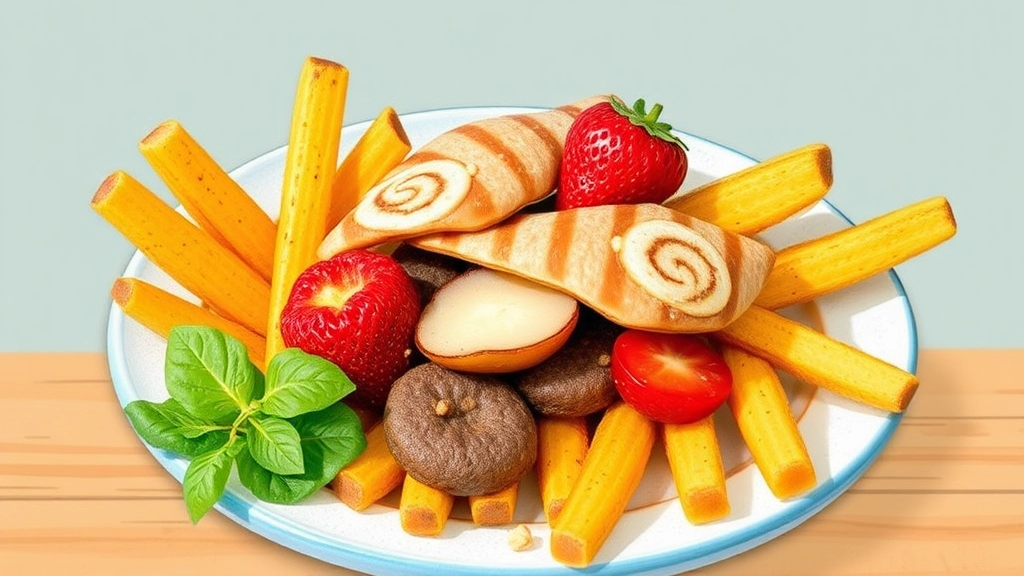Welcome to our ultimate guide on “Food For Summer Camp”!
Whether you’re a seasoned camp chef or a first-time organizer, planning nutritious and delicious meals for campers can seem daunting. But don’t worry, we’ve got you covered. From quick and easy recipes for large groups to allergy-friendly options, creative snacks, and budget-friendly meal planning, this guide will ensure your campers are well-fed and happy. We’ll also explore how to incorporate local and seasonal ingredients, campfire cooking techniques, and even ways to engage kids in meal preparation, making the whole experience educational and fun.
Safety and Hydration
Safety is paramount, so we’ll dive into best practices for packing and storing food, ensuring everything stays fresh and safe. Hydration is equally crucial, and we’ll provide tips on keeping everyone well-hydrated with a variety of beverage options.
Your Go-To Resource
Whether you’re looking to simplify your meal planning or add a touch of creativity to your camp menu, this guide is your go-to resource. So, let’s embark on this culinary adventure and make your summer camp a memorable experience for everyone!
Planning Nutritious Meals for Campers
Alright, let’s get real. Planning nutritious meals for campers can be a bit of a headache, right? You’re out in the wild, maybe miles away from the nearest grocery store, and you’ve got a bunch of hungry campers to feed. You want to keep it healthy, but also quick and easy. So, how do you pull it off?
Why Nutritious Meals Matter
First off, why should you care about nutritious meals for campers? Simple. When you’re out camping, you need energy. Whether it’s hiking, swimming, or just setting up tents, you need fuel that keeps you going. Junk food won’t cut it. Nutritious meals help you stay energised, focused, and ready for all those outdoor adventures.
Key Nutrients to Focus On
Here’s a quick list of what you should aim to include in your meals:
- Proteins: Think lean meats, beans, and nuts. These help with muscle repair and keep you feeling full.
- Carbohydrates: Whole grains, fruits, and veggies. These give you the energy to tackle those long hikes.
- Fats: Don’t skip the healthy fats like avocados, nuts, and olive oil. They are essential for long-lasting energy.
- Vitamins and Minerals: Fresh fruits and vegetables are your best friends here. They help boost your immune system and keep you healthy.
Meal Planning Tips
Alright, let’s break it down. Planning nutritious meals for campers doesn’t have to be rocket science. Here are some practical tips:
- Make a Meal Plan: Before you even pack your bags, sit down and plan out each meal. Breakfast, lunch, dinner, and snacks. Write it all down.
- Prep in Advance: Chop veggies, marinate meats, and pre-cook what you can. This saves you loads of time at the campsite.
- Keep it Simple: Stick to recipes with a few ingredients. The fewer moving parts, the less likely something will go wrong.
- Pack Smart: Use coolers for perishables and keep dry goods in airtight containers.
Sample Meal Plan
Here’s a simple, nutritious meal plan for a three-day camping trip:
- Day 1:
- Breakfast: Oatmeal with fresh berries and nuts.
- Lunch: Whole grain wraps with turkey, avocado, and spinach.
- Dinner: Grilled chicken kebabs with bell peppers and onions.
- Day 2:
- Breakfast: Greek yoghurt with granola and honey.
- Lunch: Quinoa salad with black beans, corn, and tomatoes.
- Dinner: Foil packet salmon with asparagus and lemon.
- Day 3:
- Breakfast: Scrambled eggs with mushrooms and spinach.
- Lunch: Hummus and veggie sticks with whole grain pita.
- Dinner: Beef stew with carrots, potatoes, and peas.
Real Talk: Common Challenges
Let’s talk about some real challenges you might face:
Quick and Easy Recipes for Large Groups
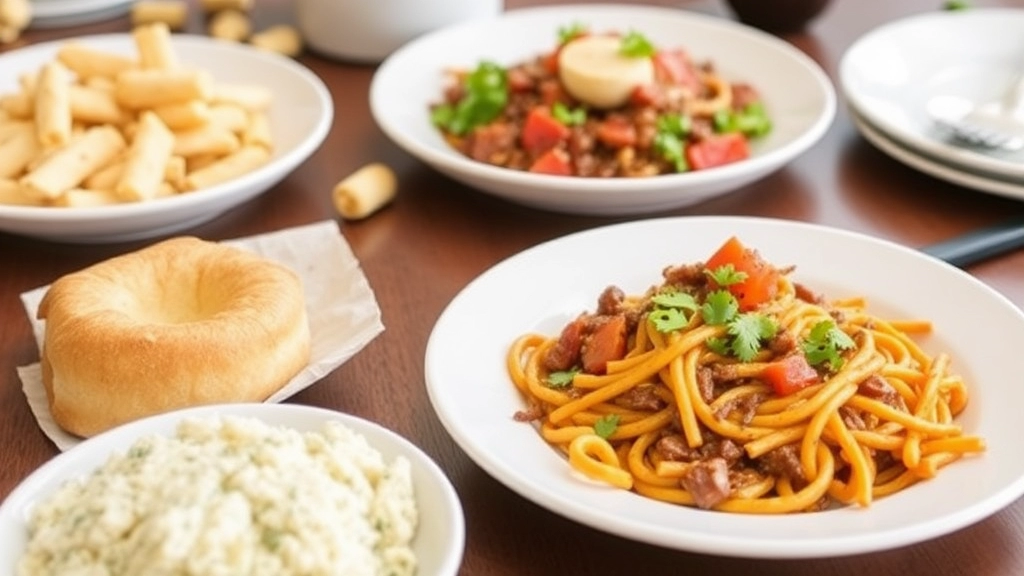
Ever tried cooking for a big group of campers and felt overwhelmed?
I get it.
Feeding a crowd can be tricky.
But it doesn’t have to be.
Let’s dive into some quick and easy recipes that’ll save you time and stress.
Breakfast Bonanza
Pancake Assembly Line
- Ingredients: Pancake mix, water, toppings (berries, syrup, chocolate chips).
- Method:
- Mix the batter in a big bowl.
- Set up a toppings station.
- Cook on a large griddle.
- Let campers add their own toppings.
Why it Works: Fast, fun, and everyone gets what they like.
Lunchtime Simplicity
Wrap It Up
- Ingredients: Tortillas, deli meats, cheese, lettuce, hummus.
- Method:
- Lay everything out buffet-style.
- Let campers create their own wraps.
Why it Works: Customisable and no cooking required.
Dinner Delight
One-Pot Pasta
- Ingredients: Pasta, canned tomatoes, veggies, cheese.
- Method:
- Cook everything in one large pot.
- Stir in cheese at the end.
Why it Works: Minimal clean-up and it feeds a crowd.
Real Talk
Here’s the thing.
Cooking for large groups can feel like a juggling act.
But with these recipes, you’ll have everyone fed and happy without the fuss.
And remember, the key to quick and easy recipes is simplicity.
Want more tips on meal planning for campers? Check out our section on Budget-Friendly Meal Planning.
Got any stories or tips of your own? Share them with us!
Keep it simple, keep it tasty, and keep it fun.
Allergy-Friendly Food Options
Alright, let’s get real for a sec. Planning meals for campers is already a juggling act, and then you throw in food allergies? It can feel like you’re trying to solve a Rubik’s Cube blindfolded. But don’t sweat it. I’ve got your back with some solid, no-nonsense tips for whipping up allergy-friendly food options that won’t have you pulling your hair out.
Why Allergy-Friendly Food Options Matter
First off, why should you care about allergy-friendly food options? Simple. No one wants to deal with an allergic reaction in the middle of the woods. It’s not just about avoiding an EpiPen situation; it’s about making sure everyone has a blast and feels included.
Common Food Allergies to Watch Out For
Before we dive into the nitty-gritty, let’s cover the basics. Here are some common food allergies you need to be aware of:
- Peanuts and Tree Nuts
- Dairy
- Gluten
- Eggs
- Soy
- Fish and Shellfish
Knowing these can save you a lot of headaches down the line.
Easy Swaps and Substitutes
Now, let’s talk solutions. Here are some easy swaps to keep your meals inclusive:
- Dairy-Free: Use almond milk, oat milk, or coconut milk instead of cow’s milk. Vegan cheese works wonders too.
- Gluten-Free: Opt for gluten-free pasta, bread, and flours like almond or coconut flour.
- Egg-Free: Applesauce, mashed bananas, or commercial egg replacers can do the trick.
- Nut-Free: Sunflower seed butter or tahini are great alternatives to peanut butter.
Allergy-Friendly Recipes
Here are a couple of go-to recipes that are a hit with everyone:
Gluten-Free Pancakes
- Ingredients:
- 1 cup gluten-free flour
- 1 tablespoon sugar
- 2 teaspoons baking powder
- 1 cup almond milk
- 1 tablespoon vegetable oil
- Instructions:
- Mix dry ingredients in one bowl.
- Mix wet ingredients in another bowl.
- Combine both and cook on a hot griddle.
Dairy-Free Mac ‘n’ Cheese
- Ingredients:
- 1 cup gluten-free pasta
- 1 cup dairy-free cheese
- 1 cup almond milk
- 1 tablespoon gluten-free flour
- Instructions:
- Cook pasta as per instructions.
- In a separate pan, mix almond milk and gluten-free flour.
- Add dairy-free cheese and stir until melted.
- Combine with pasta.
Real-Life Example
Last summer, we had a camper named Jake who was allergic to pretty much everything under the sun. His mum was super worried, but we assured her we had it covered. We made him gluten-free, dairy-free pancakes every morning, and he felt like a rockstar. No allergic reactions, just good times.
Pro Tips for Allergy-Friendly Cooking
- Label Everything: Make sure all food items are clearly labeled.
- Cross-Contamination: Use separate utensils and cookware for allergen-free meals.
- Ask Questions: Always ask campers and their parents about any allergies beforehand.
Explore More
For a deeper dive into hosting an unforgettable camp experience, explore our guide on Summer Themes for an Unforgettable Camp. If you’re curious about the logistics of camp catering, check out our tips on Summer Camp Commissary Snacks.
Creative Snack Ideas for Outdoor Activities
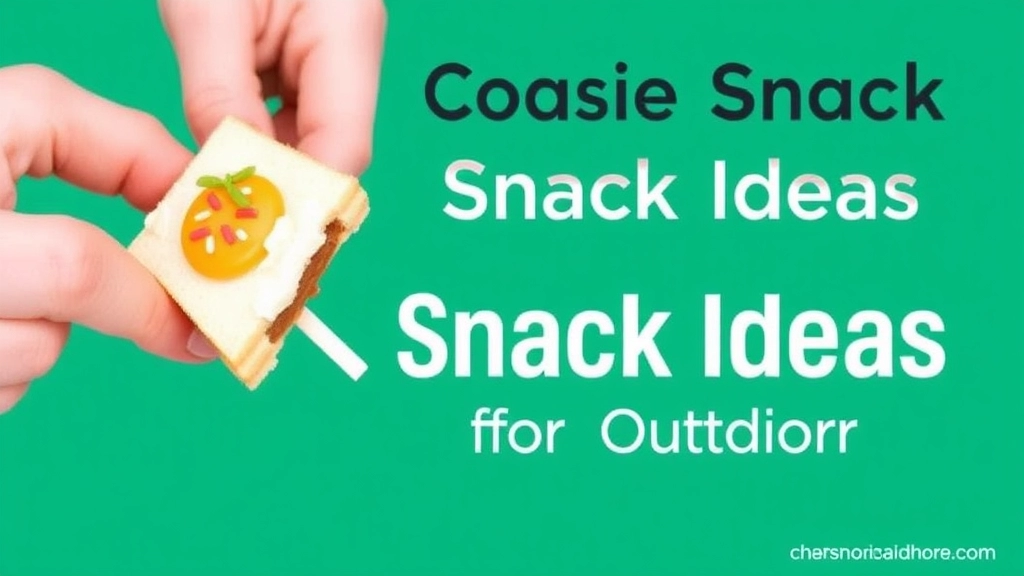
Ever been out on a hike and thought, “Man, I could really use a snack right now”? Yeah, me too. When you’re out and about with campers, having the right snacks can be a game-changer. Let’s dive into some creative snack ideas for outdoor activities that are not only tasty but also practical.
Why Snacking Matters
First off, let’s talk about why snacks are crucial.
- Energy Boost: You need fuel to keep going.
- Convenience: No one wants to cook a full meal mid-hike.
- Variety: Keeps things interesting and morale high.
Easy-to-Pack Snacks
You don’t want to lug around heavy stuff, right? Here are some lightweight options:
- Trail Mix: Mix nuts, dried fruits, and a bit of chocolate for a perfect blend.
- Fruit Leathers: Tasty and easy to carry.
- Granola Bars: Go for ones with natural ingredients.
- Veggie Chips: Crunchy and satisfying.
Fun and Interactive Snacks
Kids love to get involved, and let’s be honest, so do we.
- DIY Sandwich Wraps: Pack tortillas, some spreads, and fillings. Let everyone create their own.
- Fruit Kabobs: Skewer some fruits. It’s fun and healthy.
- Mini Pizzas: Use pita bread, a bit of sauce, and cheese. Wrap them in foil and heat over the campfire.
Allergy-Friendly Options
Got someone with allergies in the group? No worries.
- Rice Cakes: Top with nut-free butter and banana slices.
- Seed Mix: Sunflower, pumpkin, and chia seeds.
- Gluten-Free Crackers: Pair with hummus or guacamole.
Local and Seasonal Goodies
Why not incorporate some local flair?
- Seasonal Fruits: Whatever’s fresh and local. Apples, berries, you name it.
- Local Honey: Drizzle on crackers or add to tea.
Hydration Matters
Snacks are great, but don’t forget about hydration.
- Flavoured Water: Add slices of lemon, cucumber, or berries.
- Herbal Teas: Easy to pack and make.
Safety First
Always remember:
- Pack Snacks in Sealed Containers: Keeps them fresh and critter-free.
- Check for Allergens: Always double-check labels.
Budget-Friendly Meal Planning
Ever wondered how to feed a bunch of hungry campers without breaking the bank? I’ve been there, and it’s a real challenge. But don’t stressâlet’s dive into some practical tips and tricks for budget-friendly meal planning that will keep everyone satisfied.
Why Is Budget-Friendly Meal Planning Important?
You’ve got a group of campers, and they’re all looking to you for tasty meals. But here’s the thing: you’re on a budget. So how do you pull it off without resorting to instant noodles every day?
Key Concerns
- Cost vs. Quality: Can you serve nutritious meals without spending a fortune?
- Variety: How do you keep meals exciting without splurging?
- Time: Who has hours to prep when there’s a campfire waiting?
Tips for Budget-Friendly Meal Planning
1. Plan Ahead
The first rule of budget-friendly cooking is planning. Here’s how:
- Create a Weekly Menu: Know what you’re cooking each day.
- Make a Shopping List: Stick to it to avoid impulse buys.
- Look for Sales: Check out local deals and discounts.
2. Buy in Bulk
Buying in bulk can save you a ton. Think about:
- Grains and Pasta: These are cheap and filling.
- Canned Goods: Beans, tomatoes, and more.
- Frozen Veggies: Last longer and are just as nutritious.
3. Simple Ingredients, Big Flavours
You don’t need fancy ingredients to make a meal memorable. Consider:
- Spices and Herbs: Transform basic ingredients.
- Basic Proteins: Eggs, beans, and chicken are versatile and affordable.
4. Cook Once, Eat Twice
Make meals that can stretch over a couple of days:
- Chilli or Stew: Perfect for reheating.
- Pasta Bakes: Easy to make in large quantities.
Real-Life Example
Last summer, I was prepping for a camping trip with a dozen friends. I focused on bulk buys and simple recipes. We had a massive pot of chilli one night, and the leftovers became chilli dogs the next day. Cost-effective and delicious!
Budget-Friendly Meal Planning in Action
Table: Sample Budget Meal Plan
| Day | Breakfast | Lunch | Dinner |
|---|---|---|---|
| Monday | Porridge | Sandwiches | Spaghetti Bolognese |
| Tuesday | Scrambled Eggs | Wraps | Veggie Stir Fry |
| Wednesday | Pancakes | Salad | Chicken Curry |
For more ideas on keeping your summer camp meals nutritious and fun, check out our nutritious and fun food ideas. Additionally, if you’re planning a large event, don’t miss our tips on hosting the ultimate summer camp party bash!
Incorporating Local and Seasonal Ingredients
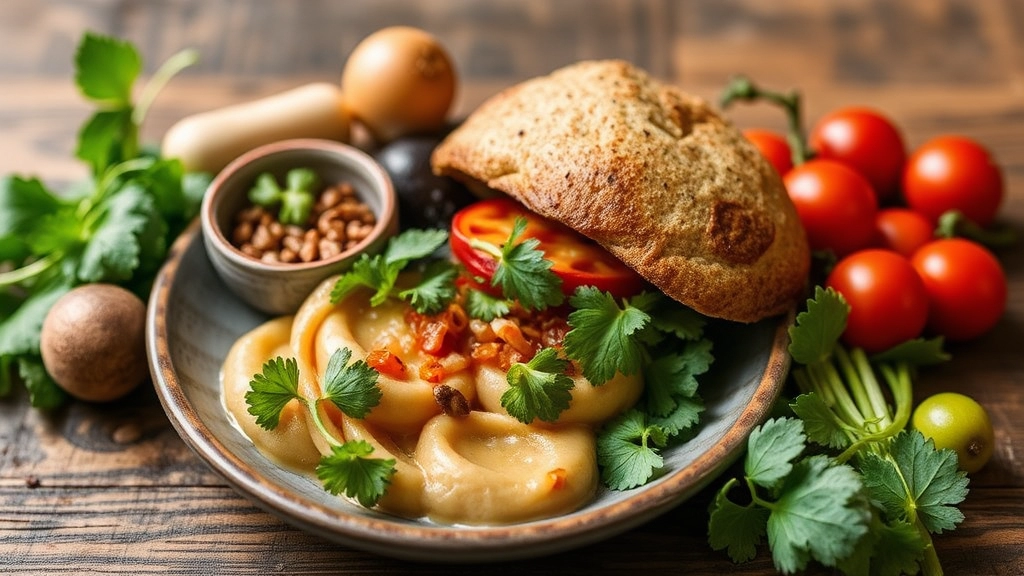
Ever wondered how to make camp meals more exciting and nutritious?
One word: local.
Using local and seasonal ingredients isn’t just a trend; it’s a game-changer.
Why should you care?
Because it’s fresh, it’s tasty, and it’s often cheaper.
Plus, it’s a fantastic way to teach kids about where their food comes from.
Why Go Local?
- Freshness: Local produce is often harvested at its peak.
- Flavour: Seasonal ingredients pack a punch in taste.
- Cost-Effective: Less travel means less cost.
- Eco-Friendly: Reduces carbon footprint.
How to Find Local Ingredients
- Farmers’ Markets: Perfect spot to snag fresh produce.
- Local Farms: Some offer pick-your-own options.
- Community Supported Agriculture (CSA): Subscribe for a regular supply.
Seasonal Ingredients to Look For
- Spring: Asparagus, radishes, strawberries
- Summer: Tomatoes, courgettes, berries
- Autumn: Pumpkins, apples, kale
- Winter: Brussels sprouts, leeks, citrus fruits
Easy Camp Recipes with Local Ingredients
- Grilled Veggie Skewers
- Use whatever’s fresh: peppers, onions, courgettes.
- Drizzle with olive oil, sprinkle salt, and grill.
- Fruit Salad
- Mix seasonal fruits like berries and apples.
- Add a splash of lemon juice.
- Hearty Stew
- Use root veggies like carrots and potatoes.
- Throw in some local herbs for flavour.
Tips for Success
- Plan Ahead: Know what’s in season before you shop.
- Be Flexible: Swap ingredients based on availability.
- Get Creative: Experiment with new flavours.
Incorporating local and seasonal ingredients can transform your camp meals.
It’s not just about eating; it’s about enjoying the best of what’s around you.
And trust me, once you start, there’s no going back.
So, next time you’re planning a camp menu, think local.
Your taste buds—and your wallet—will thank you.
Campfire Cooking Techniques
Ever tried cooking over a campfire and ended up with burnt sausages or undercooked potatoes? Yeah, I’ve been there too. Campfire cooking can be a bit of a challenge, especially when you’re trying to satisfy a crowd of hungry campers. But don’t worry, I’ve got some solid tips to make sure your campfire meals are not only tasty but also a hit with everyone.
Why Campfire Cooking?
Let’s start with the basics. Why even bother with campfire cooking? Here’s why:
- Flavour: There’s something about the smoky taste that you just can’t replicate in a kitchen.
- Experience: Cooking over a fire is an experience in itself. It’s fun, engaging, and a great way to bond with your fellow campers.
- Simplicity: You don’t need fancy equipment. A few basic tools and you’re good to go.
Essential Tools for Campfire Cooking
Before we dive into the techniques, let’s talk about the gear. Here’s what you’ll need:
- Cast Iron Skillet: Durable and perfect for an even cook.
- Grill Grate: Ideal for cooking meat and veggies.
- Long Tongs: Keep your hands safe from the flames.
- Foil: Great for making packets of food that can be placed directly in the coals.
- Fire Starters: Make sure you have a reliable way to get that fire going.
Building the Perfect Campfire
You can’t cook without a good fire. Here’s how to build one that’s perfect for cooking:
- Gather Wood: You’ll need three types – tinder (small twigs), kindling (larger sticks), and fuel wood (logs).
- Form a Base: Use the tinder and kindling to create a small teepee or log cabin structure.
- Light It Up: Use a fire starter to ignite the tinder.
- Add Fuel: Once the kindling is burning well, add the fuel wood gradually.
Campfire Cooking Techniques
Alright, let’s get to the meat of itâliterally. Here are some tried-and-true techniques:
Direct Grilling
- Best For: Steaks, burgers, and veggies.
- How To: Place the grill grate over the fire and cook directly on it. Keep an eye on the heat and move food around to avoid burning.
Foil Packets
- Best For: Fish, chicken, and mixed veggies.
- How To: Wrap your ingredients in foil and place them directly on the coals. Turn them occasionally for an even cook.
Dutch Oven Cooking
- Best For: Stews, soups, and casseroles.
- How To: Place the Dutch oven in the coals and pile some coals on the lid. This creates an oven-like environment.
Stick Cooking
- Best For: Marshmallows, hot dogs, and kebabs.
- How To: Skewer your food and hold it over the flames. Rotate for an even cook.
Pro Tips for Campfire Cooking
Let’s make sure you’re not just good, but great at this:
- Pre-Prep Your Food: Chop veggies, marinate meats, and have everything ready to go before you start cooking.
- Control the Heat: Move coals around to create hotter and cooler zones.
- Keep It Clean: Use biodegradable soap and hot water to clean your tools after cooking.
- Stay Safe: Always have a bucket of water or sand nearby to extinguish the fire if needed.
Real Stories, Real Success
I remember the first time I nailed a campfire meal. It was a simple foil packet with chicken, potatoes, and veggies. The smoky flavour was incredible, and the campers couldn’t get enough. It’s moments like these that make all the effort worth it.
So, next time you’re out in the wild, give these campfire cooking techniques a shot. Trust me, you’ll impress your fellow campers and make some unforgettable meals. Happy cooking!
For more tips on creating memorable camp experiences, check out our Top Summer Camp Games and Activities Guide and learn how to host the perfect camp event with our Ultimate Summer Camp Party Bash guide.
Engaging Kids in Meal Preparation
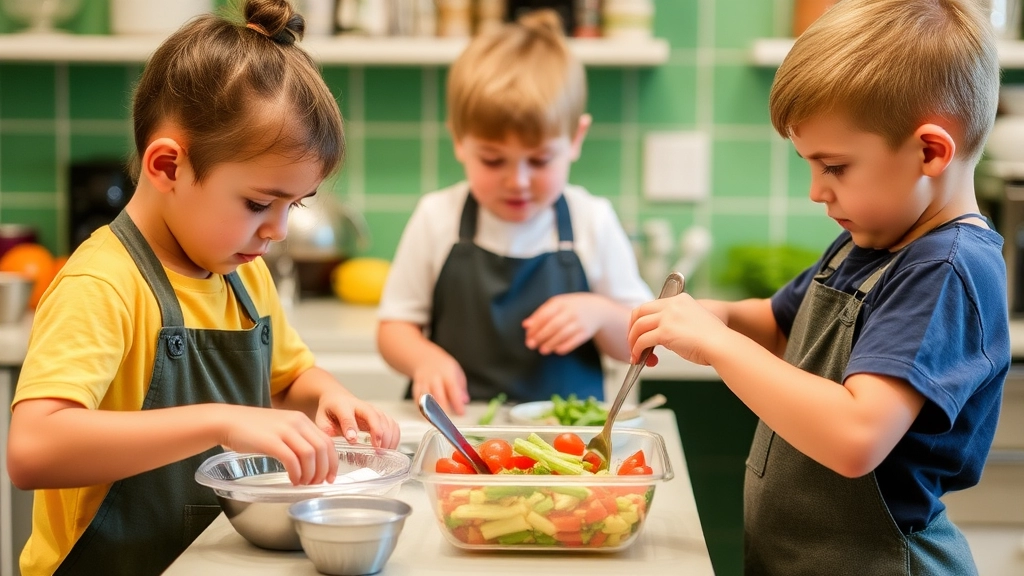
Ever tried getting kids involved in meal prep at camp?
It’s like herding cats, right?
But trust me, it’s worth it.
Why Get Kids Involved?
Kids love feeling important.
And when they help cook, they’re more likely to eat the food.
Plus, it’s a sneaky way to teach them life skills.
Make It Fun and Simple
Here’s how you can make it a breeze:
- Pick Easy Tasks: Let them wash veggies or stir the pot. Nothing too complicated.
- Use Bright Ingredients: Kids love colours. Think red peppers, green cucumbers, yellow corn.
- Create a Menu Together: Let them choose from a few options. Ownership boosts excitement.
Safety First
- Supervise: Always keep an eye on them, especially around sharp tools and hot surfaces.
- Teach Basics: Show them how to hold a knife, or how to measure ingredients.
Examples from the Field
I once had a group of kids make their own sandwiches.
Gave them bread, spreads, and toppings.
They went wild with creativity.
And guess what?
They ate every bite.
Make Clean-Up a Game
Turn tidying up into a challenge.
Who can clear the table fastest?
Winner gets the first pick of dessert.
Packing and Storing Food Safely
Alright, let’s get real. Packing and storing food safely for a camping trip can be a headache. No one wants to deal with soggy sandwiches, spoiled milk, or worseâfood poisoning. So, how do we keep our food fresh and safe without turning our camping trip into a logistical nightmare? Let’s break it down.
Real Concerns and Quick Fixes
What if my food goes bad?
How do I keep things cold without a fridge?
What if someone gets sick from the food?
These are the worries that keep us up at night before a big camping trip. But don’t sweat it; I’ve got you covered with some straightforward tips and tricks.
The Basics of Safe Food Packing
First things first, let’s tackle the basics. Here are some golden rules to follow:
- Use Insulated Coolers: Invest in a good quality cooler. It’s worth the money. Pack it with ice packs or frozen water bottles to keep the temperature down.
- Separate Raw and Cooked Foods: Use different containers to avoid cross-contamination. Raw meat should never touch anything that’s ready to eat.
- Label Everything: Trust me, when you’re rummaging through a cooler in the dark, labels are lifesavers.
Bulletproof Tips for Storing Food
Let’s make this even simpler. Here are some bulletproof tips to keep your food safe and fresh:
- Pre-chill Your Cooler: Before you pack it, throw in some ice packs and let it cool down. This way, it will stay colder for longer.
- Pack Smart: Put the items you’ll need first on top. This saves you from digging around and letting warm air in.
- Use Airtight Containers: These keep your food fresh and prevent leaks.
Stories from the Campfire
Let me share a quick story. Last summer, I went camping with a group of friends. We thought we had everything figured out, but we didn’t pre-chill our cooler. By the second day, the ice had melted, and our food was swimming in water. Not fun. Lesson learned: always pre-chill your cooler.
Advanced Tips for the Pros
If you’re looking to take it up a notch, here are some advanced tips:
- Dry Ice: If you’re camping for more than a couple of days, dry ice can keep your cooler cold for longer. Just be careful with handling it.
- Vacuum-Sealed Bags: These are great for keeping food fresh and preventing freezer burn.
- Freeze Your Meals: If you can, pre-cook and freeze meals. They’ll act as ice packs and be ready to heat up when you need them.
Packing for Allergies and Special Diets
If you’re dealing with allergies or special diets, safe packing becomes even more crucial. Here’s what you can do:
- Separate Containers for Allergen-Free Foods: Avoid any cross-contamination by using separate containers and utensils.
- Read Labels Carefully: Make sure to double-check the ingredients to avoid any allergic reactions.
Keeping It Fresh and Safe
In the end, packing and storing food safely is all about preparation and smart choices. By following these tips, you can ensure that your food stays fresh and safe, allowing you to focus on what really mattersâenjoying your camping trip. For more tips on staying cool and comfortable during your summer adventures, check out our guide on summer camping clothes.
And if you’re looking for some fun activities to enjoy while camping, explore our list of top summer camp board games that are perfect for all ages.
Hydration and Beverage Options
Alright, let’s talk about hydration and beverage options.
Ever been out on a hike and suddenly feel like you’ve been walking through the Sahara?
Yeah, it’s no joke.
Keeping everyone hydrated at camp is crucial.
So, how do we keep it simple and effective?
Why Hydration Matters
First off, hydration isn’t just about quenching thirst.
It’s about keeping energy levels up, preventing headaches, and avoiding heat exhaustion.
Trust me, you don’t want a bunch of cranky, dehydrated campers on your hands.
Water: The Ultimate Hydrator
Water is king.
But how much do you need?
- Adults: Aim for at least 2-3 litres a day.
- Kids: Around 1-2 litres, depending on their age and activity level.
Pro Tips for Hydration
- Carry Reusable Water Bottles:
- Easy to refill.
- Cuts down on plastic waste.
- Set Hydration Reminders:
- Use alarms on your phone.
- Create hydration stations around camp.
- Flavour It Up:
- Add slices of lemon, cucumber, or mint.
- Keeps it interesting and tasty.
Beyond Water: Other Beverage Options
Water’s great, but sometimes you need a bit more variety.
Here’s what you can add to the mix:
- Electrolyte Drinks:
- Perfect for replenishing lost salts.
- Great after a long hike.
- Herbal Teas:
- Chamomile or peppermint for a soothing option.
- Can be served hot or cold.
- Fruit Juices:
- Opt for 100% natural juices.
- Watch out for added sugars.
- Milk Alternatives:
- Almond, oat, or soy milk.
- Good for those with dairy allergies.
Hydration Hacks
Let’s make it even easier:
- Hydration Packs:
- Wearable water bladders.
- Ideal for long hikes.
- Infused Water Pitchers:
- Keep a large pitcher of infused water at the campsite.
- Everyone can refill easily.
- Frozen Water Bottles:
- Double up as ice packs.
- Melt into drinkable water as the day goes on.
Real Talk: Common Hydration Worries
Worried about keeping drinks cold?
- Cool Boxes:
- Invest in a good one.
- Keeps drinks cold for days.
Or maybe you’re concerned about water quality?
- Portable Water Filters:
- Lifesavers for purifying water from natural sources.
- Compact and easy to use.
For more tips on staying cool and comfortable during your summer adventures, check out our guide on summer camping clothes. And if you’re looking to keep your meals as refreshing as your drinks, our article on summer camp lunch ideas has you covered.
FAQs on Food for Summer Camp
What are some quick and easy recipes for large groups?
Feeding a crowd can be tricky, but it doesn’t have to be. Some quick and easy recipes include:
- Pancake Assembly Line: Mix batter in a big bowl, set up a toppings station, cook on a large griddle, and let campers add their own toppings.
- Wrap It Up: Lay out tortillas, deli meats, cheese, lettuce, and hummus buffet-style and let campers create their own wraps.
- One-Pot Pasta: Cook pasta, canned tomatoes, veggies, and cheese in one large pot for minimal clean-up.
Why is it important to have creative snacks for outdoor activities?
Snacks are crucial for several reasons:
- Energy Boost: You need fuel to keep going.
- Convenience: No one wants to cook a full meal mid-hike.
- Variety: Keeps things interesting and morale high.
What are some easy-to-pack snacks for hikes?
Lightweight and convenient options include:
- Trail Mix: Mix nuts, dried fruits, and a bit of chocolate.
- Fruit Leathers: Tasty and easy to carry.
- Granola Bars: Go for ones with natural ingredients.
- Veggie Chips: Crunchy and satisfying.
How can I incorporate local and seasonal ingredients into camp meals?
Using local and seasonal ingredients can make meals more exciting and nutritious. Benefits include:
- Freshness: Local produce is often harvested at its peak.
- Flavour: Seasonal ingredients pack a punch in taste.
- Cost-Effective: Less travel means less cost.
- Eco-Friendly: Reduces carbon footprint.
Where can I find local ingredients?
Great places to find local ingredients include:
- Farmers’ Markets: Perfect spot to snag fresh produce.
- Local Farms: Some offer pick-your-own options.
- Community Supported Agriculture (CSA): Subscribe for a regular supply.
How can I engage kids in meal preparation at camp?
Getting kids involved can be fun and educational. Here’s how:
- Pick Easy Tasks: Let them wash veggies or stir the pot.
- Use Bright Ingredients: Kids love colours like red peppers and yellow corn.
- Create a Menu Together: Let them choose from a few options to boost excitement.
What safety measures should I take when kids are helping in the kitchen?
Always prioritize safety:
- Supervise: Keep an eye on them, especially around sharp tools and hot surfaces.
- Teach Basics: Show them how to hold a knife or measure ingredients.
How can I make clean-up fun for kids?
Turn tidying up into a game. For example, who can clear the table fastest? The winner gets the first pick of dessert.

